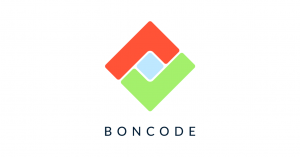Here at BonCode, we’re specialists in monitoring and analyzing custom-coded software, and we’ve noticed a phenomenon. Even when a software system is crafted from the high-quality contributions of individual developers, this does not automatically lead to a well-crafted system.
Let’s put it another way. The quality and maintainability of an entire software system is sometimes less than the sum of its parts. This is something to be aware of, especially when individual developers tend to deliver high-quality, well-crafted code. How do you detect this flaw? Why does quality fall down across the whole system, and how can you address it?
Focus on team performance
Software engineers typically work with a high-level of independence and autonomy. Invested in their section of your codebase, they have close control over the quality of their own coding output. But they sometimes lack the tools and visibility to see how their changes impact other components and the work of others. Whilst coding tends to be a solo activity, most software is the product of a team effort.
In some ways, this phenomenon is comparable to a sports team of highly-skilled pros who are not always working as a team because they do not have the strategy, insight, and oversight needed to see the bigger picture. A good example of this is entanglement – when execution of a particular software component is (overly) dependent on too many others.
One way to ensure that systems are equal to or greater than the sum of their parts is to improve communication within your development team – giving them the tools to see where changes to the code will have an impact elsewhere, taking the relevant corrective action, and that doesn’t have to result in even more meetings.
See the bigger picture
Let’s say you’re a developer working on a section of a codebase, and that code touches multiple other components and/or systems. What you need is an understanding of what else is affected when you make changes to that code. It’s about knowing the effect of one component on another.
This approach requires a shift in mindset – and technology – from source code analysis to the visualization and management of software architectures. Visualization of the bigger picture helps software engineers to know and understand the broader impact of modifications that they make, and take action – like reaching out to other members of the development team – accordingly.
On top of that, getting an accurate measure of the code – such as the number of dependencies and entanglements – can help software managers mitigate overly-complex systems and take preventative steps to ensure it doesn’t impact business continuity.
At the same time, taking regular, reliable metrics on code quality can help you consolidate and streamline it. Here’s a simplified example. Imagine an inventory system and an invoicing system have multiple functional dependencies that are growing over time. This suggests it might be better to merge them into a single, more streamlined, functional component. Or, at least, a rethink of the architecture.
Increase visibility and decrease testing effort
When a modification impacts multiple components, testing takes longer, and it can be more complicated to fix. If a component has fewer dependencies, functional testing is much faster, and it’s much easier to resolve any issues.
Many of the digital tools available to measure technical quality are focussed on individuals, as opposed to the entire project, the rest of the team, or the whole system. BonCode’s tool for measuring code-quality in any custom system gives everyone in your organization – from frontline developers to the C-suite – complete visibility over your entire system.
That means you can focus your refactoring efforts on the quality of the overall system architecture, not just individual components. After all, individual effort is not as powerful as a team effort. And after all, isn’t it the responsibility of management to align individuals to orchestrate effective collaboration? That’s why you need tools focused on more than individual performance. A team oriented software quality management platform is what you need.
Measure, monitor, and maintain code quality with BonCode’s platform for analyzing custom-coded systems. Contact us.





